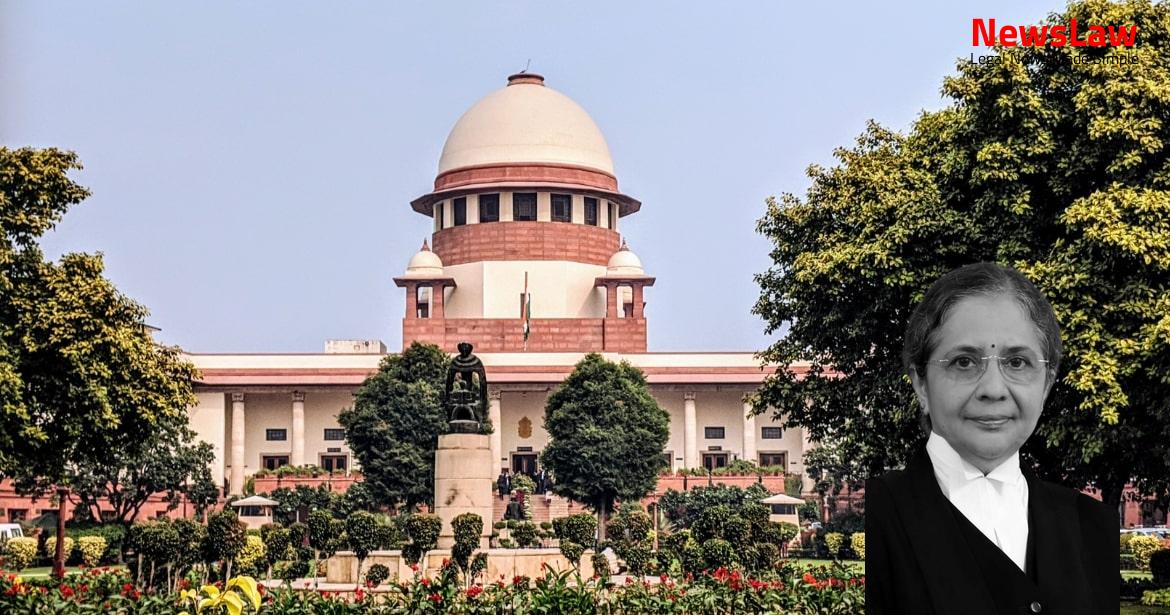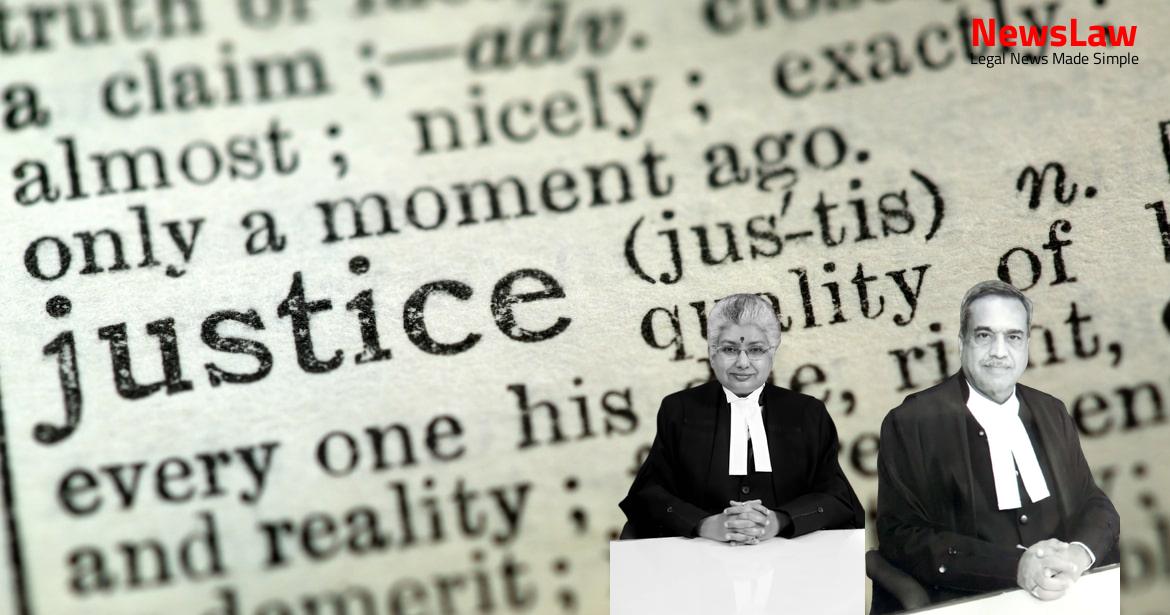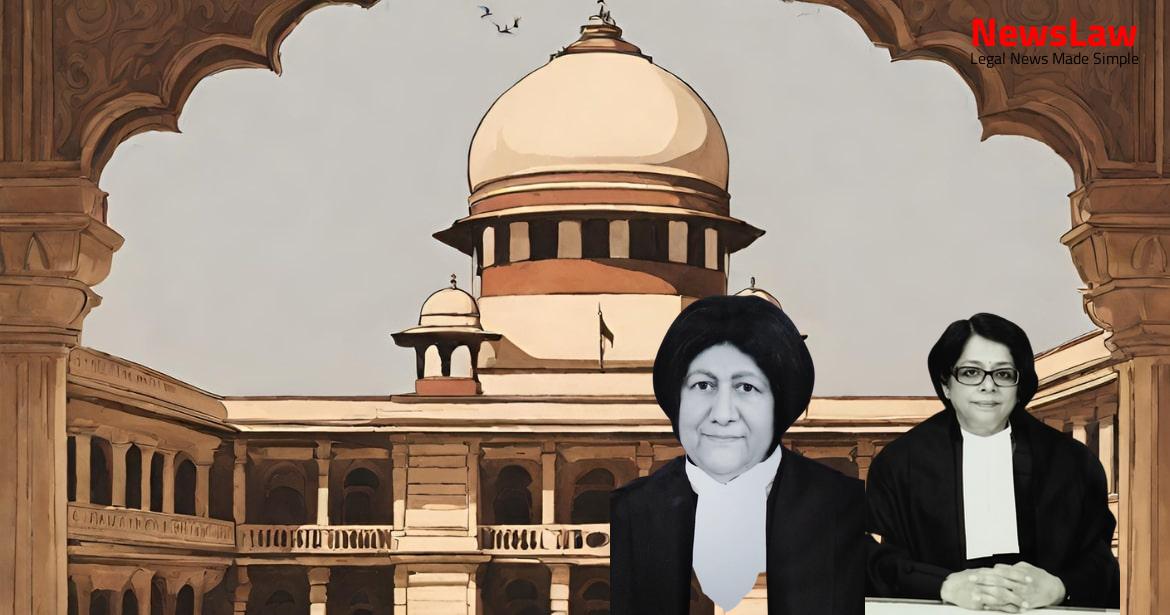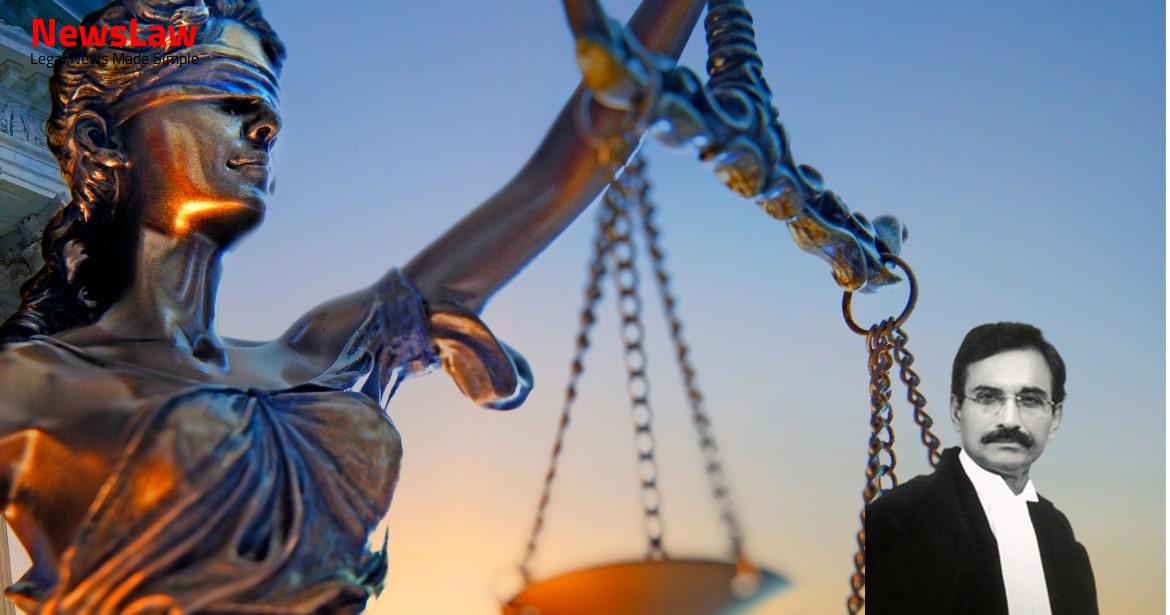The facts in seriatim as manifest from the record are that one Maman Singh who was a recorded Bhumidhar of the land admeasuring 4 Bighas 18 Biswas in Khasra No 6/19/2 M in village Samepur, Delhi as alleged, sold the land to one Bhai Ram vide registered sale deed dated 9 March, 1970. It has been pleaded by the appellants that before the registered sale deed dated 4 May, 1989 came to be executed by Maman Singh in favour of the respondents herein and their names were mutated on 31 May, 1989, the appellants had come into possession over the subject land. 670 of 1995 before the learned Single Judge of the Delhi High Court which came to be dismissed by judgment dated 14 July, 2008 and that became the subject matter of challenge at the instance of the respondents assailing in LPA No 591 of 2008.
Also Read: https://newslaw.in/case-type/civil/regularization-of-village-level-workers-in-tamil-nadu/
Subsequently, by order dated 2 September, 1992, this Court directed the concerned SHO to hand over possession to the appellants herein and pursuant to Order of this Court, the appellants are in possession of the subject land in question. Learned counsel further submits that after taking holistic view of the Act, 1954 and of Act 1957, even after declaration of urbanization by issuance of notification under Section 507(a) of the Act 1957, it will not cease the right of the parties inter se conferred under provisions of the Act 1954. Learned counsel submits that the Act, 1954 is one such law which is a special Act relating to land reforms by virtue of Section 1(2) which extends to the whole of the UT of Delhi. In substance, learned counsel submits that Act, 1954 continues to operate even after urbanization under Section 507(a) of the Act, 1957 and further submits that the finding returned by the Division Bench of the High Court in the impugned judgment is not legally sustainable and deserves to be interfered with by this Court. Vikas Singh, learned senior counsel for the respondents, submits that the respondents Narain Singh and Som Dutt purchased 2 Bighas 18 Biswas and 2 Bighas respectively from the Bhumidhar Maman Singh by a registered sale deed dated 4 May, 1989.
In this regard, the civil suit which has been filed at their instance is practically a non-starter because of pendency of the present appeal still the appellants have no right, title and interest over the subject property in question.
Learned counsel further submits that this is the consistent view of the Delhi High Court and apart from the judgment impugned, this very question and effect of issuance of the notification under Section 507(a) of the Act, 1957 was earlier examined by the High Court in Smt.
We have heard learned counsel for the parties and with their assistance perused the material available on record.
It may be apposite to take note of the relevant provisions of the Act before we appreciate the effect and ambit of Act, 1954 which are as follows:- “1. (2) It extends to the whole of the Union territory of Delhi, but shall not apply to- (a) the areas which are or may before the first day of November, 1956 be included in a Municipality or a Notified Area under the provisions of the Punjab Municipal Act 1911, or a Cantonment under the provisions of the Cantonments Act, 1924, 3.
(3) If the whole of a Gaon Sabha area ceases to be included in rural areas as defined in the Delhi Municipal Corporation Act, 1957, by virtue of a notification under section 507 of that Act, the Gaon Sabha constituted for that area shall thereupon stand dissolved and on such dissolution,- (a) all properties, movable and immovable, and all interests of whatsoever nature and kind therein including moneys held in Gaon Sabha Area Fund, vested in the Gaon Sabha immediately before such dissolution, shall, with all rights of whatsoever description, used, enjoyed or possessed by Gaon Sabha, vest in the Central Government; (b) all duties, obligations and liabilities incurred, all contracts entered into and all matters and things engaged to be done by, with or for the Gaon Sabha before such dissolution shall be deemed to have been incurred, entered into or engaged to be done with or for the Central Government; (c) all rates, taxes, fees, rents and other charges due to the Gaon Sabha immediately before such dissolution shall be deemed to be due to the Central Government; (d) all suits, prosecutions and other legal proceedings instituted or which might have been instituted by or against the Gaon Sabha may be
(5) If the size of a Gaon Sabha Area is reduced as a result of a portion thereof ceasing to be included in rural areas as aforesaid and the Chief Commissioner is of the opinion that the size of the Gaon Sabha area is not sufficiently large to be under the jurisdiction of a separate Gaon Sabha, he may, by notification in the Official Gazette, declare that such Gaon Sabha area shall, from a date to be specified in the notification, cease to be a separate Gaon Sabha area and the Gaon Sabha constituted there for shall stand dissolved and may direct that the said area shall be included in one or more adjoining Gaon Sabha areas, and thereupon the provisions of section 3 of the Delhi Panchayat Raj Act, 1954 (Delhi Act 3 of 1955), shall, so far as may be, apply.” ‘Delhi town’ has been defined under Section 3(5) of the Act which clearly defines that areas which immediately before the establishment of the Municipal Corporation of Delhi were included in the limits of Delhi Municipality. Let us take a view of relevant provisions of Act, 1957 for the present purpose which are as under:- “2(52) “rural areas” means the areas of Delhi which immediately before the establishment of a Corporation are situated within the local limits of the District Board of Delhi established under the Punjab District Boards Act, 1883 (Punjab Act 20 of 1883), but shall not include such portion thereof as may, by virtue of a notification under section 507, cease to be included in the rural areas as herein defined; 2(61) “urban areas” means the areas of Delhi which are not rural areas; 502. — Notwithstanding anything contained in the foregoing provisions of this Act,— (a) a Corporation with the previous approval of the Government, may, by notification in the Official Gazette, declare that any portion of the rural areas shall cease to be included therein and upon the issue of such notification that portion shall be included in and form part of the urban areas; (b) a Corporation with the previous approval of the Government may, by notification in the Official Gazette,— (i) exempt the rural areas or any portion thereof from such of the provisions of this Act as it deems fit, (ii) levy taxes, rates, fees and other charges in the rural areas or any portion thereof at rates lower than those at which such taxes, rates, fees and other charges are levied in the urban areas or exempt such areas or portion from any such tax, rate, fee or other charge.” Section 2(52) defines the ‘rural areas’ which demonstrates that the area of Delhi which immediately before the establishment of a Corporation, falls within the local limits of the District Board of Delhi, be considered to be the rural area but that shall not include such portion thereof which by virtue of notification under Section 507 declared to be urbanized and it ceases to be included under the term ‘rural areas’ and Section 2(61) defines ‘urban areas’ as the areas of Delhi which are not rural areas. At the same time, Section 502 on which the learned counsel for the appellants has given more emphasis, it only provides that this Act(Act 1957) shall not be construed authorizing disregard to any law for the time being in force and rightly so for the reason, that scope and ambit of the Act, 1954, in no manner, has to be disregarded by the provisions of the Act, 1957. Relevant Sections of Act, 1957 are reproduced hereunder:- “2(e) “development area” means any area declared to be a development area under sub-section (1) of section 12; 2(l) the expression “land” shall have the meaning assigned to it in section 3 of the Land Acquisition Act, 1894. (3) After the commencement of this Act no development of land shall be undertaken or carried out in any area by any person or body (including a department of Government) unless,— (i) where that area is a development area, permission for such development has been obtained in writing from the Authority in accordance with the provisions of this Act; (ii) where that area is an area other than a development area, approval of, or sanction for, such development has been obtained in writing from the local authority concerned or any officer or authority thereof empowered or authorised in this behalf, in accordance with the provisions made by or under the law governing such authority or until such provisions have been made, in accordance with the provisions of the regulations relating to the grant of permission for development made under the Delhi (Control of Building Operations) Act, 1955 (53 of 1955), and in force immediately before the commencement of this Act: Provided that the local authority concerned may [subject to the provisions of section 53A] amend those regulations in their application to such area.
(5) Notwithstanding anything contained in sub-sections (3) and (4) development of any land begun by any department of Government or any local authority before the commencement of this Act may be completed by that department or local authority without compliance with the requirements of those sub-sections.” So far as the DDA Act is concerned, it is only for the purpose of development of Delhi according to the sanctioned master plan and zonal development plan notified under Section 7 of the Act and for matters ancillary thereto regardless of fact whether it is a rural area or urbanized which is for different purposes covered by the provisions of the Act, 1954 and Act 1957. Indu Khorana (supra) which was later followed in the judgment impugned by the Division Bench of the High Court dated 22 November, 2012.
So far as the submission made in reference to the earlier judgment of the Division Bench of the High Court of Delhi which has not been looked into by the Division Bench under the impugned judgment in the case of Umed Singh (supra) is concerned, on principle, we are not in agreement with the view expressed by the High Court in Umed Singh (supra), at the same time, we would like to observe that the case was in reference to consolidation notification issued on 8 September, 1993, and what will be the effect of Consolidation and Prevention of Fragmentation Act, 1948, in that reference, the High Court examined the scope and ambit of the Act, 1957.
Also Read: https://newslaw.in/case-type/civil/judgment-on-execution-of-lease-deed-for-remaining-land/
What persuaded this Court is that even after upholding the judgment of the Division Bench of the High Court dated 22 November, 2012, it gives a fresh life to the respondents to go ahead in taking possession of the subject property despite the fact that registered sale deed dated 4 May, 1989 was executed in their favour by Maman Singh(Bhumidhar) but they are still deprived of possession and the defence of the appellants in counter is that they are in possession of the subject land by adverse possession. At this point of time, it reminds us that the civil suit filed at the instance of the respondents for taking possession of the subject land which is pending for the last 32 years has not started its journey as yet and this is called the travesty of injustice to a person who is indisputedly the title holder still unable to enjoy the property.
Pending application(s), if any, shall stand disposed of.
Case Title: MOHINDER SINGH (D) THR. LRS . Vs. NARAIN SINGH . (2023 INSC 223)
Case Number: C.A. No.-003828-003828 / 2017



